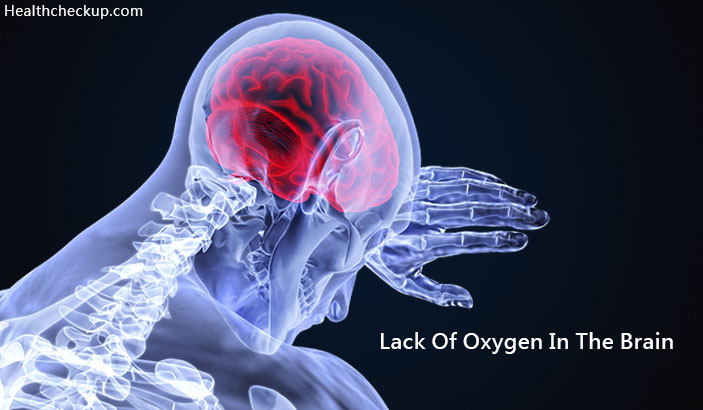What Is Lack of Oxygen in The Brain?
Brain hypoxia or lack of oxygen in the brain is the point at which the cerebrum isn’t getting enough oxygen. This can happen when somebody is suffocating, stifling, choking, or in heart failure. Cerebrum damage, stroke, and carbon monoxide harming are other conceivable reasons for mind hypoxia. The condition can be not kidding in light of the fact that mind cells require a continuous stream of oxygen to work appropriately. One must be aware of the lack of oxygen in the brain in order to cure it easily.
Lack of Oxygen in The Brain Symptoms
The cerebrum requires roughly 3.3 ml of oxygen for every 100 g of mind tissue every moment. If not
- At first, the body reacts to bring down blood oxygen by diverting blood to the cerebrum and expanding cerebral bloodstream. Bloodstream may increment up to double the ordinary stream yet no more. In the event that the expanded blood stream is adequate to supply the cerebrum’s oxygen needs then no indications will result.
- In any case, if bloodstream can’t be expanded or if multiplied bloodstream does not right the issue, side effects of cerebral hypoxia will start to show up. Gentle side effects incorporate challenges with complex learning assignments and decreases in here and now a memory. On the off chance that oxygen hardship proceeds, subjective unsettling influences, and diminished engine control will result.
- The skin may likewise seem somewhat blue (cyanosis) and heart rate increments. Proceeded with oxygen hardship brings about blacking out, long haul loss of awareness, trance like state, seizures, suspension of mind stem reflexes, and cerebrum death.
Target estimations of the seriousness of cerebral hypoxia rely upon the reason. Blood oxygen immersion might be utilized for hypoxic hypoxia, yet is by and large unimportant in different types of hypoxia.
In hypoxic hypoxia 95– 100% immersion is viewed as ordinary; 91– 94% is viewed as mellow and 86– 90% direct. Anything beneath 86% is thought about severe.
It ought to be noticed that cerebral hypoxia alludes to oxygen levels in mind tissue, not blood. Blood oxygenation will generally seem ordinary in instances of hypemic, ischemic, and hystoxic cerebral hypoxia. Indeed, even in hypoxic hypoxia blood measures are just an estimated manage. The oxygen level in the cerebrum tissue will rely upon how the body manages the lessened oxygen substance of the blood
Brain hypoxia side effects run from gentle to serious. Gentle indications include
- Temporary memory misfortune
- Reduced capacity to move your body
- Difficulty focusing
- Difficulty settling on quality choices
- Lack of oxygen to the brain cause headaches too
Extreme Indications Include
- Seizure
- Coma
- Brain Demise
Lack of Oxygen in The Brain Causes
Cerebral hypoxia can be caused by any occasion that seriously meddles with the cerebrum’s capacity to get or process oxygen. This occasion might be interior or outside to the body. Mellow and direct types of cerebral hypoxia might be caused by different sicknesses that meddle with breathing and blood oxygenation.
- Serious asthma and different sorts of frailty can cause some level of diffuse cerebral hypoxia.
- Extreme cerebral hypoxia and anoxia are typically caused by horrible accidents. For example, gagging, suffocating, strangulation, smoke inward breath, medicate overdoses, pounding of the trachea, and stun. It is additionally recreationally self-instigated in the swooning diversion and in suggestive suffocation.
Transient Ischemic Attack (TIA): It is frequently alluded to as a “smaller than expected stroke”. TIA is currently characterized as a transient scene of neurologic brokenness caused by the central mind, spinal rope, or retinal ischemia, without intensely localized necrosis. The indications of a TIA can resolve inside a couple of minutes, dissimilar to a stroke. TIAs share indistinguishable fundamental etiology from strokes, an interruption of the cerebral bloodstream.
TIAs and strokes give similar side effects. For example, contralateral loss of motion (inverse side of the body from influenced cerebrum side of the equator), or sudden shortcoming or deadness. A TIA may cause sudden diminishing or loss of vision, aphasia, slurred discourse, and mental disarray.
Silent Stroke: This is a stroke which does not have any outward indications, and the patient is regularly uninformed they have endured a stroke. In spite of its absence of identifiable side effects, a quiet stroke still causes cerebrum harm and places the patient at expanded hazard for a noteworthy stroke later on. Quiet strokes regularly cause injuries which are distinguished through the utilization of neuroimaging. For example, fMRI. The danger of quiet stroke increments with age yet may likewise influence more youthful grown-ups
There are numerous restorative conditions and occasions that interfere with the stream of oxygen to your mind. Stroke, heart failure, and a sporadic pulse can keep oxygen and supplements from heading out to the mind.
Other Conceivable Reasons For Oxygen Exhaustion Include
- Hypotension, which is to a great degree low circulatory strain
- Anesthesia difficulties amid medical procedure
- Gagging
- Carbon monoxide poisoning
- Suffocating
- Taking in carbon monoxide or smoke
- Making a trip to high elevations (over 8,000 feet)
- Cerebrum damage
- Strangulation
- Medicinal conditions that make it hard to inhale. For example, outrageous asthma attacks.
[Read – Affect of Alcohol On the Brain and Behavior]
How to Know if you have Lack of Oxygen in Brain?
Your specialist can analyze mind hypoxia by inspecting your side effects, ongoing exercises, and restorative history. A physical exam and tests are normally part of the procedure. The tests may include:
- A blood test that demonstrates the measure of oxygen in your blood
- An MRI examine, which demonstrates the point by point pictures of your head
- CT check, which gives a 3-D picture of your head
- An echocardiogram, which gives a picture of your heart
- An electrocardiogram, which measures your heart’s electrical movement
- An electroencephalogram (EEG), which measures the electrical movement of your cerebrum and pinpoints seizures
How to Increase Oxygen Levels in The Brain?
Oxygen encourages your cerebrum to work. However, a significant number of your day by day exercises or propensities may repress the course of blood, oxygen and different supplements in your mind and all through your cerebrospinal framework. Adjusting your spinal rope elevates conveyance of oxygen to your mind, however holding any situation for larger timeframes can impede cerebral flow. Some of the ways to increase oxygen levels in the brain are
- Take Short Strolls for the Duration of the Day: It’s not important to focus on a protracted exercise session to receive the rewards of strolling. Taking short strolls will likewise help increment the bloodstream to your mind. Indeed, even a stroll of three to five minutes will positively affect your blood’s flow. Exploit normally happening chances to walk. Take the stairs rather than the lift. Stop at a separation from your goal. Get off the transport or prepare before your exit, and walk the rest of the course.
- Inhale Through Your Nose: Connect with your stomach, in your stomach zone. This is additionally called “Gut Relaxing.” Breathing profoundly moves the air and oxygen down into the lower regions of the lungs where the greater part of the flow of blood is. Breathing through the mouth will diminish the introduction to naturally oxygenated air. Breathing with the stomach results in more oxygen entering this blood.
- Hold Up: Stand up on the two feet or only one foot. An investigation distributed by the Oxford University Press diary “Mind,” reports that standing up enacts cerebral course. The examination found that remaining with the two feet together upgraded course in the foremost flap and the privilege visual cortex in the cerebrum.
Lack of Oxygen in Brain Side Effects
The impacts of oxygen hardship are like those of other cerebrum wounds. The guess relies upon how serious the absence of oxygen to the mind was. The degree of neuron passing, and the nature of restorative and rehabilitative care. With quality active recuperation, your mind may figure out how to make up for harmed areas, so even extreme wounds warrant a progressing promise to exercise based recuperation.
Basic Long Haul Impacts of Oxygen Hardship can Include
- Harm to particular cerebrum areas denied of oxygen. Different mind areas tend to facilitate diverse capacities, so a few capacities may be seriously injured, while others stay unblemished. For example, the damaged survivor may have the capacity to comprehend the dialect yet unfit to talk.
- Changes in temperament or identity.
- A trouble with memory, including the capacity to review certainties, names of items or individuals, perceive faces, learn new data, or review personal realities.
- Changes in engine aptitudes. Various mind districts help facilitate development, so if these territories are harmed, you may battle to walk, compose, or take part in different capacities.
- Unending torment. At the point when the mind is harmed, it might mistakenly process torment signals, making you feel torment notwithstanding when there isn’t damage.
- The failure to feel torment or to effectively react to torment signals. For example, torment in your arm may feel like an agony in your leg.
- Troubles with motor control. Many mind damage survivors create addictions, forceful conduct, or sexually wrong impulses.
- Manifestations of dysfunctional behaviours. For example, sadness or nervousness.
- Dementia like manifestations including disarray, memory challenges, and indications of quick cerebrum maturing.
Medically Reviewed By









